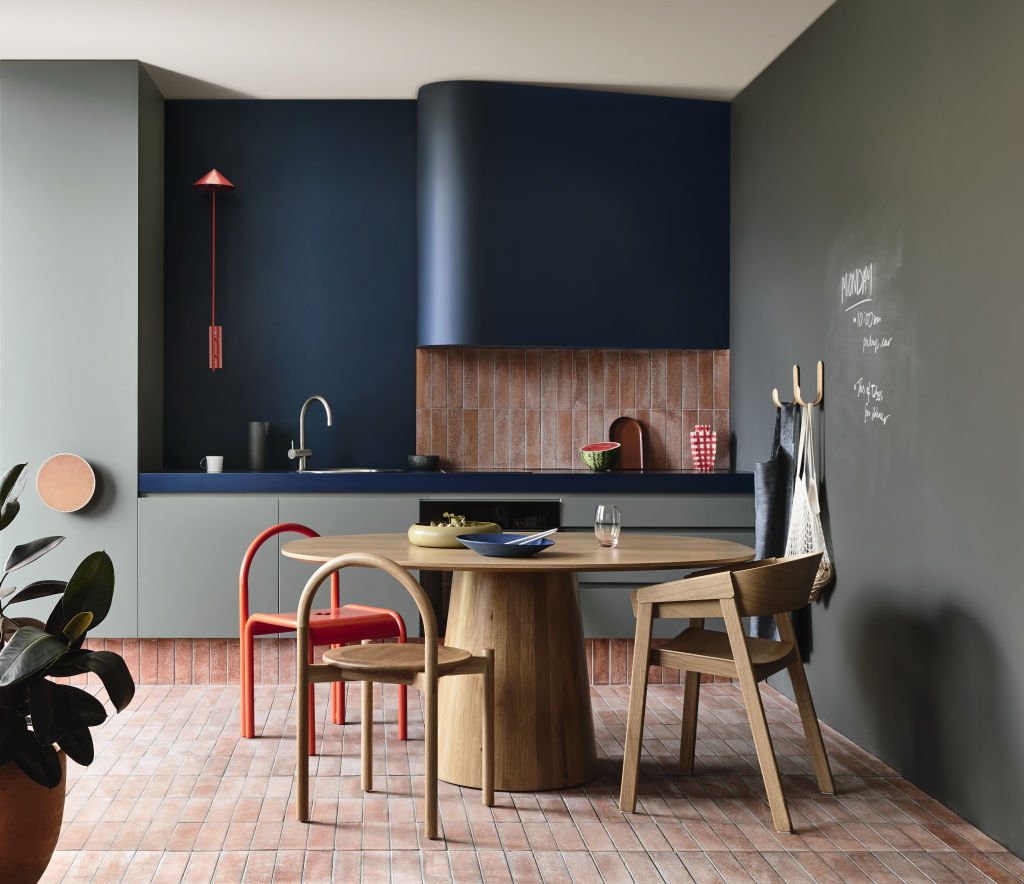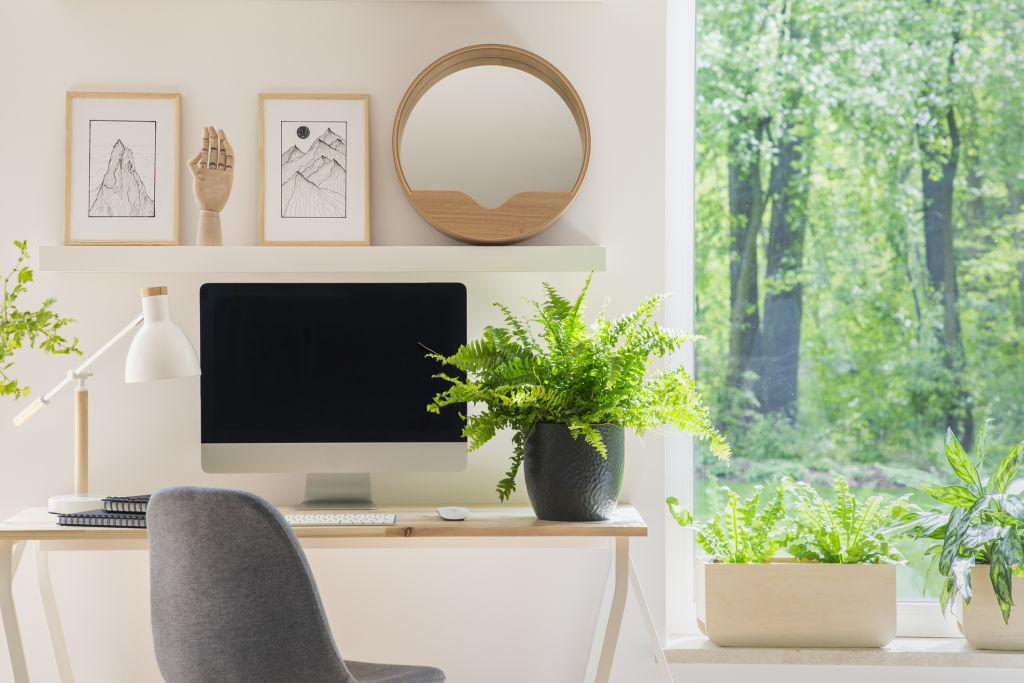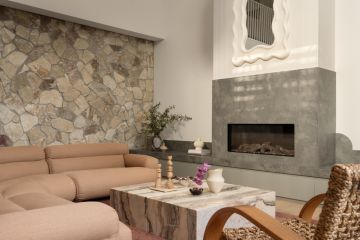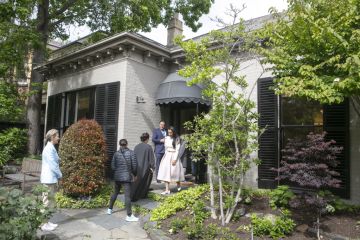The interior design trends you need to know in 2021

Never before have Australians’ homes worked so hard. In 2020, they became offices, gyms, virtual social meeting places, schools and entertainment hubs.
All that time at home highlighted the importance of how we feel when we are home, and just how well those homes meet our evolving needs.
In the year to come, more Australians are likely to be picking up paintbrushes and calling in architects in a bid to turn muddled spaces into high-functioning sanctuaries.
“Holidaying at home is one of the biggest trends we are seeing in 2021,” says Sydney designer Greg Natale. “Whether it be turning your current home into more of a sanctuary space, or buying a holiday property in your home state, people are finding the joy in staying home,” he says.
Whatever the scale of the home project, we asked the experts what Australians can look to in interior design in 2021.
Kitchen and bathroom overhaul
A recent survey conducted by The Blue Space suggests almost four in every 10 Australians will be tackling home renovations in 2021. Melbourne interior designer Meredith Lee says this statistic supports her recent experience as the number of requests for kitchen and bathroom redesigns and upgrades surges. “When these rooms don’t work, they become real pain points,” she says. “Everyone is acutely aware of everything they don’t like and what they want to change.”

Curves are sticking round
Jessica Ciantar, interior designer and course co-ordinator for Design School, says curves made an appearance at Milan’s Design Week in 2019, gained momentum in 2020, and are not disappearing any time soon. “[We’re seeing] curves in everything from furniture and homewares, to island benches,” she says.
Flexible workspaces
After a year perched at kitchen tables alongside our school-aged children, it’s no real surprise a recent home trends survey recorded a 39 per cent surge in the popularity of the home office. And that will continue, architect Thomas Andrews of Studio A2 predicts, as new homes meet the work and leisure needs of the whole family. “Study nooks are no longer simply the domain of children’s bedrooms, but are likely to become a common sight in master suites, and tucked away from circulation and living spaces.”

We’re feeling tactile
Months spent indoors have inspired us to get back to basics and surround ourselves with natural and textured materials reflective of the outdoors, says interior decorator and stylist Lauren Egan, who has been working with dark timbers, seagrass weaves, linens and chunky woven fabrics. It’s something Jessica Ciantar has observed too, as natural stone, handmade tiles and render are all being embraced in current interior design.
“These elements bring added texture and depth to spaces … layering tactile materials can make an otherwise ordinary room come to life,” says Egan.
Sacha Leagh-Murray, general manager of sales and marketing at Laminex, says timber finishes are “huge” in kitchens this year, which is why the brand has released its new zero gloss PureGrain finish. With a woodgrain texture of painted timber, the finish is perfect for homeowners or designers looking to marry durability with luxury. Leagh-Murray also points to the rustic terracotta tiles, and matt finishes showcased in architect firm Kennedy Nolan’s Studio Kitchen as other options for adding warmth and texture.

Bringing the outdoors in through colour
The palette for 2021 follows suit, with organic tones linking interiors to the landscape. The experts agree: gone are the days of the stark white kitchen and bathroom, as bolder, more comforting colours take over. “Natural flax linens, myriad greens that echo the garden, muddy browns, beiges – no longer a dirty word – bring warmth and a sense of being grounded,” says Egan.
Leagh-Murray says Laminex’s Colour Collection range, featured in Kennedy Nolan’s recent designs, embraces this shift to a nature-inspired palette, with Laminex Paper Bark, French Cream, Green Slate and French Navy gaining cult followings. The season’s tones also serve as a nod to the 1970s, says Ciantar, “inspiring the best kind of nostalgia”.

Practical spaces are being beautified
Greg Natale says he has noticed a shift towards the practical in the past 12 months. Walk-in pantries and sculleries are now the norm, and laundries are being moved closer to kitchens in the name of convenience. And with the added interest in these everyday spaces, comes the desire to make every corner of our homes aesthetically pleasing. “My clients want their pantries and laundry finishes and floors to be as beautiful as the rest of their houses,” he says.
Designs are getting smarter, too. “I had a client spend $25,000 on a super-luxe dry-cleaning cupboard but, more commonly, there is a lot of attention put on storage and bench space.”
Blending old and new
Passion for vintage furniture will continue, driven by sustainability and our love of a Facebook Marketplace bargain. “There’s no doubt the 1970s have had a strong resurgence, but don’t be surprised to see the sleek lines and fun of the post-modern 1980s and early 1990s objects move in and take over,” says Egan. Designers are blending the old with the contemporary to create beautiful, one-of-a-kind spaces.
We recommend
States
Capital Cities
Capital Cities - Rentals
Popular Areas
Allhomes
More







